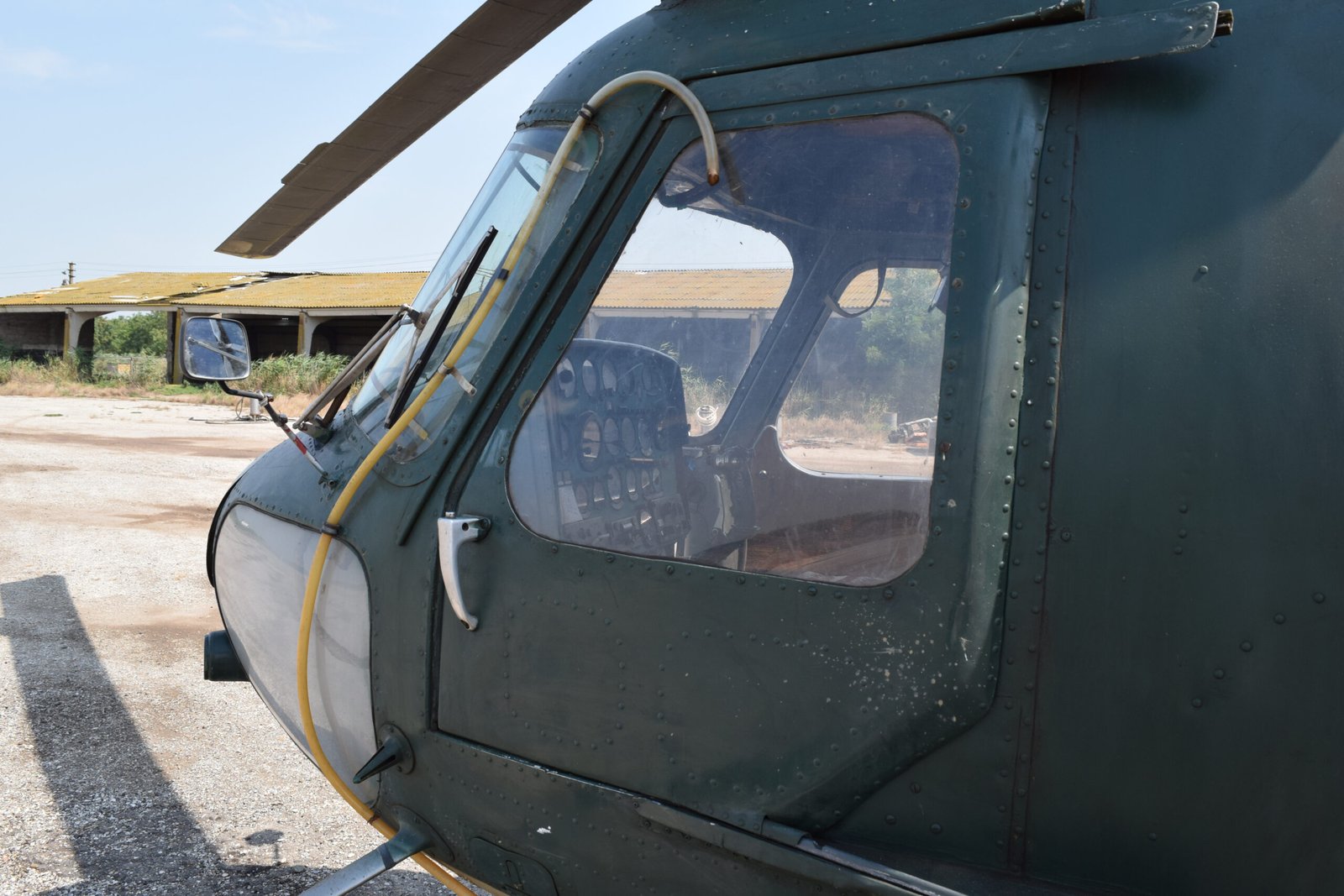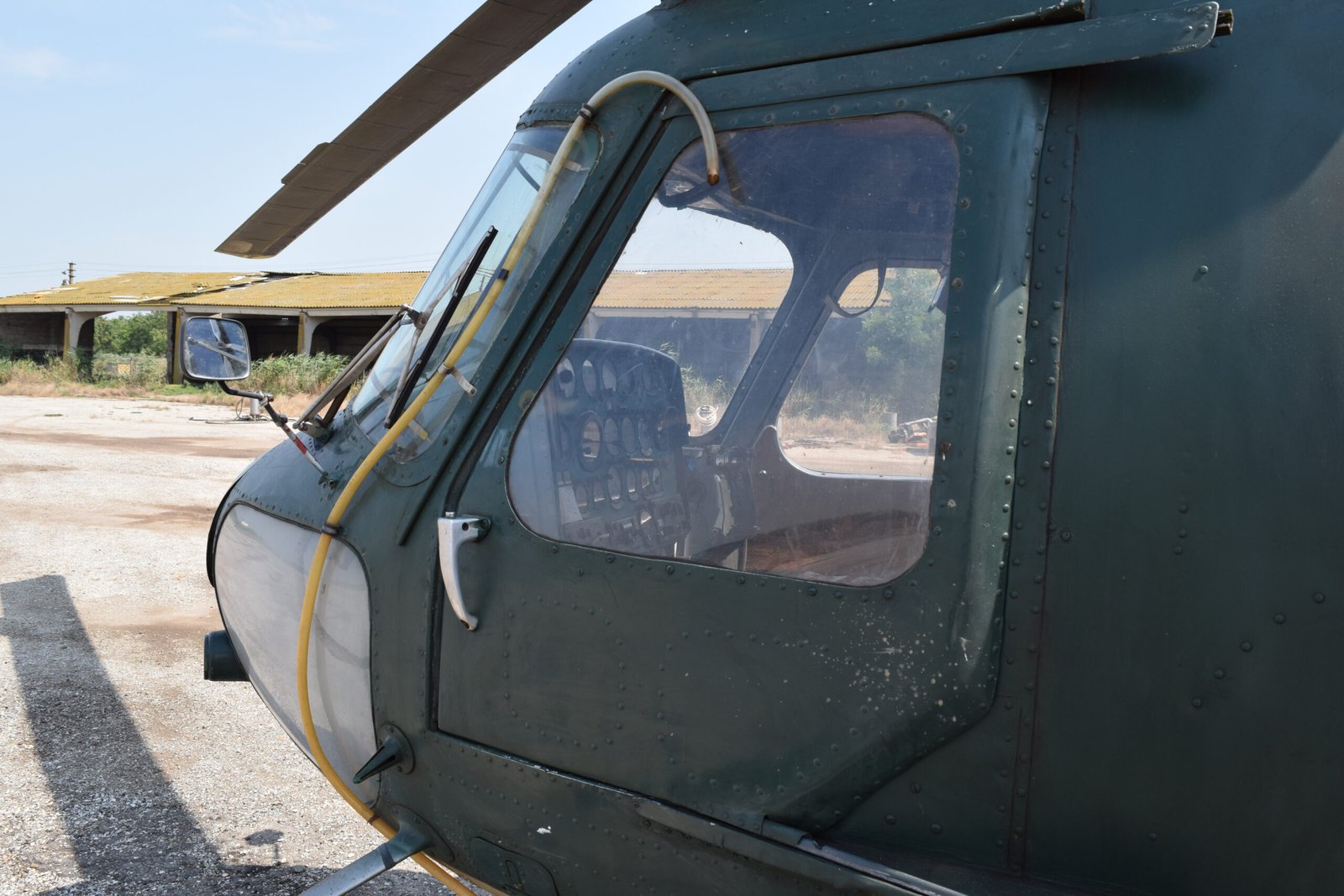Technology training
Wings of Change: How Aviation is Adapting to Environmental Challenges
As the world grapples with climate change, the aviation industry finds itself at a pivotal crossroads. The soaring demand for air travel, combined with concerns about environmental sustainability, has pushed the sector to embrace innovation like never before. From cutting-edge technology training programs to the rise of drones and online courses, aviation is evolving rapidly in response to these challenges.
One of the most significant technological advancements in aviation training is the use of simulators. Gone are the days when aspiring pilots relied solely on traditional flight instruction. Today’s state-of-the-art simulators provide an immersive experience that closely replicates real-world flying conditions. These high-fidelity environments allow students to practice maneuvers, develop problem-solving skills, and understand complex systems without leaving the ground. Moreover, they significantly reduce fuel consumption and emissions associated with training flights, thus promoting greener practices right from the start.
For those eager to delve deeper into aviation discussions and stay updated on industry trends, a plethora of blogs and websites exist. Some noteworthy mentions include “The Points Guy,” where you can find insights into airline loyalty programs; “AirlineReporter,” which covers airline news and reviews; and “Flying Magazine,” offering expert advice on various aspects of flying. Social media has also become an invaluable resource; platforms like Twitter host vibrant conversations under hashtags such as #AvGeek or #AviationNews, making it easy for enthusiasts to connect.
In addition to blogs and social media channels, numerous online courses offer aspiring aviators critical knowledge. Ground schools have transitioned online, providing flexibility for those who may not be able to attend in-person classes. Institutions like Embry-Riddle Aeronautical University and Purdue University Global offer comprehensive curricula covering everything from basic aerodynamics to advanced navigation techniques. Online platforms such as Coursera or Udemy also feature specialized courses tailored for specific interests within aviation—ideal for anyone looking to enhance their skills while balancing other commitments.

The increasing popularity of drones marks another transformative change within the aviation landscape. As technology advances, drones are being utilized across various industries—from agriculture monitoring to disaster relief efforts—showcasing their versatility beyond traditional flight operations. The Federal Aviation Administration (FAA) has been proactive in establishing regulations that facilitate safe drone operations while promoting innovation in this burgeoning field. For prospective drone operators or enthusiasts wanting more information about regulations or certification processes, visiting FAA’s dedicated drone page provides essential resources.
Pilot jobs continue evolving alongside these changes too! The industry’s push towards sustainability has led airlines to seek candidates skilled not only in flying but also knowledgeable about eco-friendly practices. Companies are increasingly looking for pilots who understand green technologies or have experience operating electric aircraft—a trend that will likely gain momentum in coming years.
To navigate this ever-evolving landscape effectively, staying informed through reliable sources remains crucial. The FAA’s official website serves as a treasure trove of information regarding licensing requirements, regulations updates, and safety guidelines—ensuring aviators remain compliant while pursuing their passion.
In conclusion, aviation stands at a remarkable juncture where tradition meets innovation driven by environmental necessity. With enhanced training methods using simulators, accessible online education platforms, exciting opportunities with drones—and a commitment toward sustainable practices—the future looks bright for those ready to embrace these wings of change!
Flight Paths: How Aviation is Shaping Global Connectivity
In an era where the world feels smaller than ever, aviation plays a pivotal role in knitting together distant regions, cultures, and economies. The advancements in technology not only enhance safety and efficiency but also shape the future of global connectivity. As we soar through the skies, let’s explore how aviation technology training, online resources, and emerging trends like drones are revolutionizing this industry.

Aviation technology has come a long way since the days of wooden biplanes. Today’s pilots rely heavily on sophisticated simulators that replicate various flying conditions and scenarios. These state-of-the-art training tools allow aspiring aviators to hone their skills without leaving the ground. Simulators provide a risk-free environment for learning, enabling pilots to navigate thunderstorms or emergency situations while receiving real-time feedback from instructors. This shift towards virtual training is not just cost-effective; it enhances safety by ensuring that pilots are well-prepared before they take to the skies.
For those looking to delve deeper into aviation beyond traditional flight schools, a plethora of online courses and ground schools are available at your fingertips. Platforms such as Coursera and Udemy offer specialized courses covering everything from aerodynamics to air traffic control principles. The flexibility of these programs allows individuals to learn at their own pace while balancing other commitments—perfect for those aspiring to become certified pilots or aviation professionals.
In addition to formal education, staying informed about industry trends is crucial for anyone passionate about aviation. A wealth of blogs and websites can serve as invaluable resources for insights into current events, technological advancements, and career advice within the field. Some notable mentions include:
1. **AirlineGeeks.com** – Provides up-to-date news on airlines around the globe.
2. **ThePointsGuy.com** – Focuses on travel tips and maximizing loyalty points.
3. **FlyingMagazine.com** – Offers expert reviews on aircraft along with pilot stories.
4. **PPRune.org** – A popular forum among pilots where they share experiences and advice.
5. **AviationWeek.com** – Delivers in-depth analysis of aerospace developments.
Social media platforms also play a significant role in connecting aviation enthusiasts worldwide. Twitter accounts like @AeroNewsNet keep followers updated on breaking news, while Instagram profiles such as @PilotLife showcase stunning aerial photography alongside glimpses into a pilot’s daily life.

As we explore further into modern aviation landscapes, drones are proving transformative—opening new avenues for connectivity and commerce while raising questions about regulations and airspace management. Drones have found applications beyond mere recreational use; industries such as delivery services, agriculture, surveillance, and even emergency response have started integrating unmanned aerial vehicles (UAVs) into their operations.
For those intrigued by this burgeoning sector or considering a career in piloting drones commercially, it’s essential to understand FAA regulations governing drone usage. The Federal Aviation Administration provides comprehensive resources online that cover licensing requirements for remote pilots (Part 107 certification), safety guidelines for drone operation, and tips for navigating airspace restrictions.
So whether you’re an aspiring pilot eager for knowledge or simply a curious traveler keen to understand more about our interconnected world through aviation—there’s never been a better time to get involved in this dynamic field! With technology advancing rapidly alongside educational opportunities expanding infinitely—aeronautical dreams can be transformed into reality faster than ever before! Embrace your passion today; who knows where your flight path may lead?
Wings of Change: How Aviation is Transforming Global Travel
In the ever-evolving landscape of global travel, aviation stands at the forefront, driving innovation and efficiency. From cutting-edge technology to revolutionary training methods, the industry is experiencing a significant transformation that reshapes how we connect with the world.

One of the most notable advancements in aviation has been the integration of high-tech simulators into pilot training programs. These sophisticated tools allow aspiring pilots to experience realistic flight scenarios without leaving solid ground. With immersive environments that mimic real-world conditions—from turbulent weather to complex navigation—the use of simulators provides invaluable hands-on experience while ensuring safety and reducing costs. Training through simulation not only accelerates learning but also enhances decision-making skills, preparing pilots for unexpected challenges they may face in actual flights.
For those seeking knowledge beyond traditional classrooms, numerous online resources have emerged, making aviation education more accessible than ever. Aspiring aviators can explore a variety of online courses and ground schools tailored to all levels of expertise. Websites like Coursera and Udemy offer specialized programs on topics ranging from aircraft systems to air traffic control procedures. Furthermore, organizations such as AOPA (Aircraft Owners and Pilots Association) provide comprehensive educational resources designed for both novice and seasoned pilots alike.
As you dive deeper into this fascinating field, you’ll discover a plethora of aviation blogs and websites that cater to various interests within the industry. For instance, “Airline Reporter” offers insights into airline news and trends, while “FlightGlobal” delivers in-depth analysis on aviation economics and technology developments. Social media platforms are also buzzing with vibrant communities; follow hashtags like #AvGeek or #PilotLife on Twitter or Instagram to join discussions with fellow enthusiasts and professionals. Additionally, forums like PPRuNe (Professional Pilots Rumour Network) serve as platforms for exchanging experiences and advice among pilots worldwide.
With advancements in drone technology further amplifying change within aviation, we witness another layer added to our travel experience. Drones are revolutionizing industries ranging from delivery services to aerial photography—expanding their applications beyond just hobbyist use into essential business operations. As regulations evolve under organizations such as the FAA (Federal Aviation Administration), embracing these unmanned aerial vehicles becomes increasingly viable for commercial enterprises.

Speaking of regulations, staying updated is crucial for anyone involved in aviation—whether you’re an aspiring pilot or a seasoned professional. The FAA provides extensive resources online related to licensing requirements, safety protocols, and regulatory updates which are essential reading material for those interested in pursuing a career in flying or maintaining compliance within their operations.
As job opportunities continue to expand across various sectors of aviation—from commercial airlines seeking qualified pilots to tech companies developing innovative flight solutions—the demand for skilled professionals grows concurrently with technological progressions in this space.
In conclusion, as we soar into an era marked by remarkable changes driven by technology in aviation—be it through enhanced training practices utilizing simulators or groundbreaking contributions made possible by drones—the future looks bright for global travel enthusiasts everywhere! Embrace these wings of change as they elevate your adventures above cloud nine!
From Runway to Reality: The Evolution of Air Travel
The world of aviation has witnessed a spectacular transformation over the decades, reshaping not only how we travel but also how we learn about flying. With the advent of online aviation courses and ground schools, aspiring pilots can now embark on their journey from the comfort of their own homes. Gone are the days when students had to rely solely on traditional classroom settings; today’s digital learning platforms offer flexibility and accessibility that cater to diverse learning styles.
These online courses encompass everything from basic aerodynamics to advanced navigation techniques. Students can engage with interactive modules, quizzes, and even virtual classrooms, providing a comprehensive educational experience. For those eager to step into the cockpit as professional pilots, ground schools serve as a vital foundation. They cover essential topics such as regulations, weather patterns, and aircraft systems—knowledge critical for success in both written exams and real-world scenarios.
As the aviation industry continues to expand, so does the spectrum of job opportunities for pilots. From commercial airlines to charter services and cargo operations, there is an increasing demand for skilled aviators. In recent years, many have turned their eyes toward specialized fields like agricultural aviation or aerial firefighting, proving that the sky is truly the limit when it comes to career options.
While traditional flying remains at the forefront of air travel evolution, another fascinating development has emerged: drones. These unmanned aerial vehicles (UAVs) are revolutionizing various sectors including agriculture, delivery services, photography, and even search-and-rescue missions. With regulatory bodies like the FAA recognizing this shift by establishing guidelines for drone operation and training programs for operators, enthusiasts are witnessing an exciting intersection between innovation and regulation.
For anyone keen on staying updated about aviation trends or seeking guidance in their careers, numerous blogs and websites exist within this vibrant community. Notable mentions include “Airline Reporter,” which offers insights into airline experiences; “FlightAware,” known for its real-time flight tracking; and “Pilot’s Digest,” focusing on pilot stories and educational content. Additionally, social media platforms have become invaluable resources where communities thrive—Instagram accounts dedicated to stunning aerial photography or Twitter threads discussing industry news keep enthusiasts engaged.
Moreover, technology has played an integral role in shaping modern aviation training methodologies. Flight simulators have evolved significantly over time—from rudimentary models resembling arcade games to sophisticated systems mimicking real cockpit environments with near-realistic physics engines. These simulators provide aspiring pilots with safe spaces in which they can practice maneuvers without risk while allowing seasoned professionals to hone their skills under various conditions.
Finally, if you’re interested in pursuing a career in aviation or simply want more information about its myriad facets—from regulations set by organizations like the FAA to technological advancements—numerous resources are at your fingertips. Websites such as FAA.gov offer extensive materials ranging from safety protocols to certification requirements; meanwhile platforms like AOPA.org provide a wealth of knowledge tailored specifically for general aviation enthusiasts.
In conclusion, air travel is not just about reaching new heights—it’s about embarking on a journey filled with continuous learning and innovation. Whether you’re dreaming of soaring through clouds as a pilot or exploring new realms with drones , one thing is certain: The sky isn’t just an endpoint; it’s where our aspirations take flight!

Sky High Careers: Exploring the Many Paths in Aviation
The aviation industry is a thrilling realm that offers a plethora of career opportunities, whether you dream of soaring through the skies as a pilot or prefer to stay grounded in roles that support air travel. With advancements in technology and a growing demand for aviation professionals, there has never been a better time to explore this exciting field. Let’s take a look at some pivotal components that can guide your journey.
*Education and Training: Online Aviation Courses & Ground Schools**
For aspiring aviators, traditional classroom settings are no longer the only option. The rise of online aviation courses has revolutionized how individuals prepare for careers in this dynamic sector. From flight theory to navigation and meteorology, these courses provide flexibility and accessibility for students worldwide. Ground schools are another excellent resource, offering essential knowledge about aircraft systems, regulations, and flight operations.
Many institutions offer certifications that can be completed at your own pace, allowing you to balance work or other commitments while gaining valuable insights into aviation. Organizations like the Aircraft Owners and Pilots Association (AOPA) provide various resources including online training programs tailored for different levels—from beginners to seasoned pilots looking to refine their skills.
*Drones: A New Frontier**
Drones have taken the aviation world by storm! With applications ranging from aerial photography to agricultural monitoring and disaster response, unmanned aerial vehicles (UAVs) are creating job opportunities in fields previously unimagined. Businesses require licensed drone operators who understand FAA regulations governing UAV use.
As with traditional piloting, obtaining certification is crucial when it comes to flying drones commercially. The FAA offers comprehensive guidelines on how to become a certified remote pilot under Part 107—an essential step for anyone wishing to dive into this burgeoning sector.
*Aviation Jobs: Beyond Piloting**
While many dream of becoming pilots, numerous career paths exist within the aviation ecosystem. Air traffic controllers ensure safe takeoff and landing procedures; aircraft maintenance technicians keep planes in top shape; flight attendants provide customer service during flights; and logistics coordinators handle cargo operations behind the scenes.
It’s vital to recognize that each role contributes significantly to making air travel safe and efficient—each piece of this vast puzzle plays an integral part.
*Aviation Technology Training & Simulators**
As technology evolves rapidly within aviation, staying updated is paramount. Flight simulators have transformed pilot training by providing realistic environments where trainees can practice maneuvers without stepping foot inside an actual aircraft. These advanced tools enhance learning experiences while minimizing risks associated with real-world flying.
Moreover, many airlines now incorporate virtual reality into their training programs—allowing pilots or cabin crew members to experience scenarios they may encounter during flights without leaving the ground. This blend of technology with traditional methods ensures well-prepared personnel ready for every situation.

*Connecting with Aviation Communities**
Networking is essential in any profession—and aviation is no exception! Numerous blogs and websites cater specifically to those interested in all things airborne:
**Airline Pilot Central**
**FlightAware**
**Pilot Network**
**The Flying Magazine Blog**
**AOPA Blog**
Social media platforms also serve as fantastic resources where enthusiasts share insights:
Twitter accounts like @AeroNews
Instagram hashtags such as #aviationlovers
Facebook groups dedicated solely to pilots or avgeeks
In conclusion, whether you’re pursuing online courses or exploring new technologies like drones, there are countless pathways within the vast landscape of aviation waiting for you! Embrace this ever-evolving field where passion meets opportunity—your sky-high career awaits!




